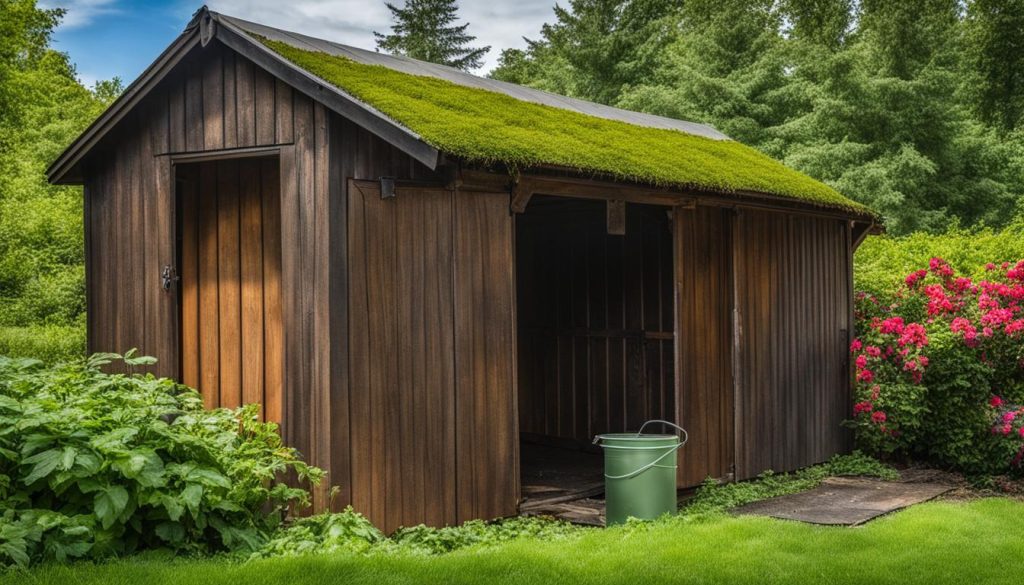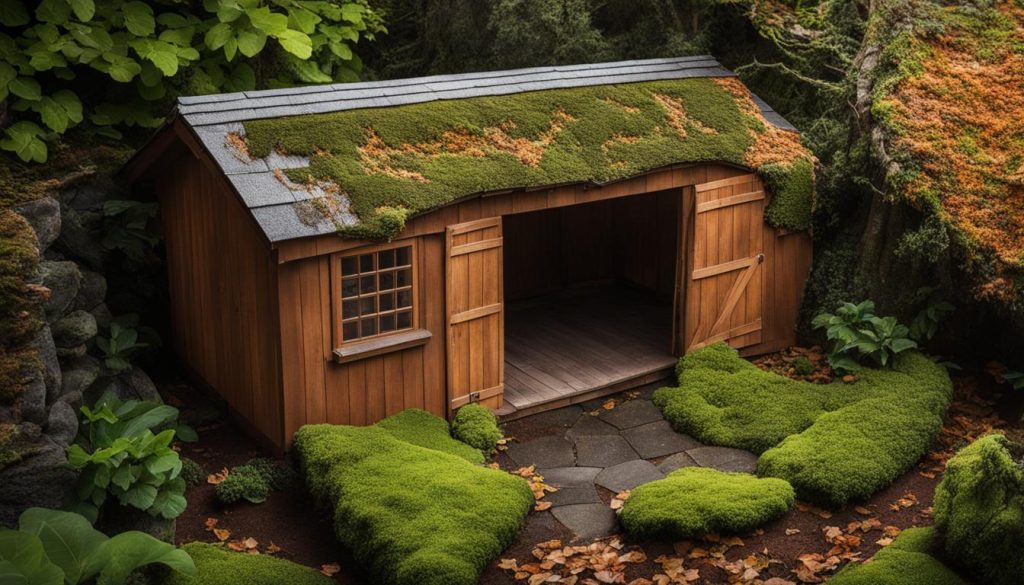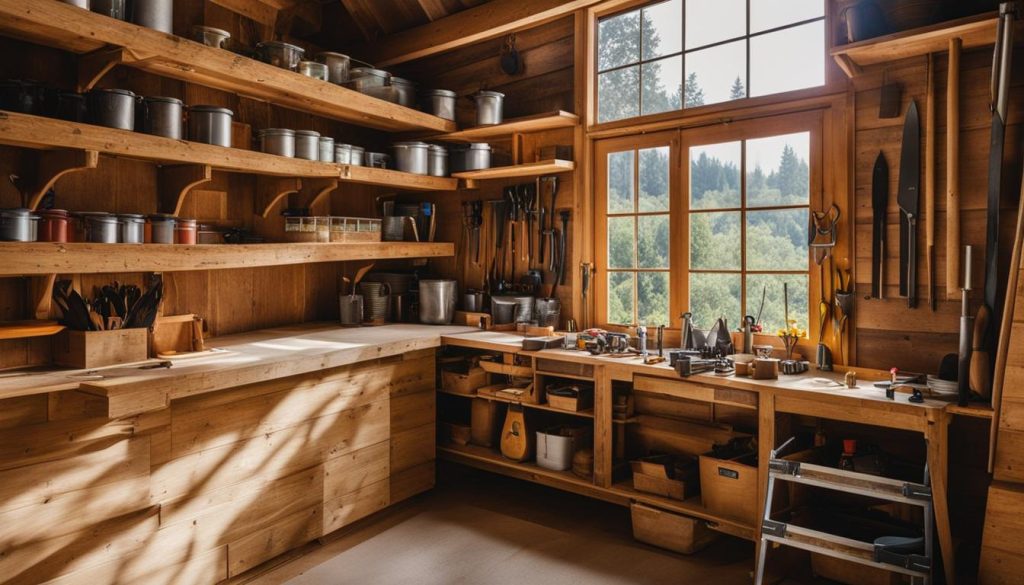
Essential Tips for Maintaining Your Wooden Shed
Hello, fellow shed owners! If you’re like me and take pride in your wooden shed, then you understand the importance of proper maintenance and care. Neglecting this vital task can lead to decay, rot, and other damage that could significantly shorten the lifespan of your beloved shed. But worry not, for I have compiled a list of essential tips to help you keep your wooden shed in excellent condition for years to come.
Wooden shed maintenance, shed care, shed upkeep, wooden shed preservation, shed maintenance tips – these are the keywords we’ll be delving into as we explore the various aspects of maintaining your shed. So, let’s dive right in and discover the secrets to ensuring your wooden shed remains sturdy, attractive, and functional for many years!
Join me on this journey as we explore the best practices for treating and protecting the wood, fixing loose panels and hinges, maintaining the roof, promoting airflow and ventilation, and keeping the interior clean and organized. By following these simple yet effective tips, you’ll be able to preserve the life and appearance of your wooden shed, saving you time and money in the long run.
So, fellow shed enthusiasts, get ready to unleash the full potential of your wooden shed. Let’s embark on this maintenance adventure together and ensure that your shed remains a reliable and attractive space that you can enjoy for many years to come!
Treating and Protecting the Wood
When it comes to maintaining your wooden shed, treating and protecting the wood is of utmost importance. By taking the necessary steps to preserve the wood, you can ensure that your shed remains durable and resistant to decay and rot.
If you’re unsure whether your shed has had an oil or water preserve, it’s best to start from scratch. Begin by sanding the wood to create a smooth surface. Then, apply a new coat of either oil preserve or water preserve, depending on your preference and the specific needs of your shed.
Oil preserves, such as linseed or teak oil, penetrate the wood, nourishing it from within. This type of preserve enhances the natural beauty of the wood while providing deep protection against moisture and UV damage. On the other hand, water preserves, like varnish or paint, create a seal on the surface of the wood, shielding it from external elements.
| Treatment Type | Advantages |
|---|---|
| Oil Preserve | Deep penetration, natural appearance, UV protection |
| Water Preserve | Surface seal, color variety, moisture resistance |
To ensure effective wood preservation, choose a high-quality mixture that is specifically designed for outdoor use. Follow the manufacturer’s instructions for application and reapply the treatment every 6-12 months. It’s especially important to treat the wood before the start of the autumn months when the weather gets colder and wetter.
Quick Tips for Treating Wood:
- Start with a smooth surface by sanding the wood.
- Choose either oil or water preserve based on your needs.
- Opt for high-quality mixtures for optimal results.
- Reapply the treatment every 6-12 months and before the start of autumn.
By giving your wooden shed the proper treatment and protection, you can safeguard its longevity and enjoy a beautiful and functional outdoor space for years to come.
Fixing Loose Panels and Hinges
When it comes to maintaining your wooden shed, it’s important to pay attention to the small details. Loose panels and hinges can not only compromise the structural integrity of your shed but also allow water and moisture to seep in, causing potential damage. To ensure the longevity of your shed, it’s crucial to fix any loose panels and lubricate the hinges regularly.
Start by inspecting your shed’s panels and identifying any that are loose or unstable. Use a screwdriver or drill to secure them back in place, making sure they are tightly fastened to the frame. If the panels are severely damaged or beyond repair, it may be necessary to replace them entirely.
Next, focus on the hinges. Over time, hinges can seize up and become stiff, making it difficult to open and close the shed door. To prevent this, regularly lubricate the hinges with a silicone-based lubricant or WD-40. Apply the lubricant generously to the hinges, ensuring smooth movement and preventing rust or corrosion.
Superior Strength and Security
“By super-gluing the hinges to the door, you can provide an extra layer of strength and security to your shed. This helps to prevent the hinges from loosening over time and ensures that the door remains firmly in place even during strong winds or adverse weather conditions.”
Consider using a strong adhesive, such as super glue, to secure the hinges to the shed door. This additional step can provide superior strength and security, giving you peace of mind knowing that your shed is well-protected.
Remember, regular maintenance is key to preserving the quality and lifespan of your wooden shed. By fixing loose panels and hinges and keeping them well-lubricated, you can ensure that your shed remains sturdy and resilient for years to come.
Maintenance Tasks for Fixing Loose Panels and Hinges
| Task | Frequency |
|---|---|
| Inspect shed panels | Monthly |
| Tighten loose panels | As needed |
| Replace damaged panels | As needed |
| Lubricate hinges | Every 3-6 months |
| Super-glue hinges to the door | Once, for added strength |
Tips for Maintaining Your Shed Roof
When it comes to maintaining your wooden shed, don’t overlook the importance of roof maintenance. A well-maintained roof not only protects your shed from rain and potential leaks but also ensures its overall durability and longevity. Follow these essential tips to keep your shed roof in top condition:
- Regularly remove leaves and debris: Leaves and debris can accumulate on the roof, leading to water buildup and potential damage. Take the time to clear your roof of any fallen leaves, branches, or other debris regularly.
- Secure the roofing felt: Check the roofing felt pins to ensure they are secure. Over time, weather conditions and general wear and tear can cause the pins to loosen. If you notice any loose pins, replace them to maintain a secure and watertight roof.
- Replace the roofing felt when necessary: Roofing felt serves as a protective layer for your shed roof. However, it can wear down over time. It is recommended to replace the roofing felt every few years or as needed to ensure optimal protection.
By following these simple maintenance tasks, you can safeguard your shed from potential roof damage and ensure its durability for years to come.
Remember, a well-maintained shed roof is crucial for preserving the overall condition of your wooden shed. Neglecting roof maintenance can lead to costly repairs or even the need for a full roof replacement. Take the time to inspect, clean, and secure your shed roof regularly, and you’ll enjoy a sturdy and leak-free shed for years to come.

Airflow and Ventilation
Proper airflow and ventilation are crucial for maintaining the longevity and structural integrity of your wooden shed. Without proper ventilation, moisture can build up inside the shed, leading to mold, rot, and other issues. In this section, I will provide key tips to ensure optimal airflow and ventilation in and around your shed.
Removing Overhanging Trees and Clearing Plants
One of the first steps you should take to promote adequate airflow is to remove any overhanging trees or tree branches that are in close proximity to your shed. Overhanging branches can obstruct the flow of air and also pose a risk of damage to the roof and structure of the shed during storms. Additionally, clear any plants or vegetation that may be touching or growing against the shed walls. This will not only improve airflow but also minimize the risk of moisture buildup and potential damage to the wood.
Ensuring Proper Clearance Around the Shed
It’s important to maintain sufficient clearance around the shed to allow for proper airflow. Avoid placing the shed too close to fences, walls, or other structures that may restrict the movement of air. Ideally, there should be at least a few feet of space on all sides of the shed. This will facilitate better ventilation and prevent the accumulation of moisture that can lead to dampness and decay.
Installing Ventilation Features
In addition to maintaining clearances, you can further enhance airflow and ventilation by installing ventilation features on your shed. One option is to incorporate vents or louvers on the walls or roof of the shed. These allow for the exchange of fresh air and the release of stagnant, moist air. Another option is to install windows that can be opened to promote airflow. When choosing windows, opt for ones that can be securely closed to prevent water ingress during rainstorms but also provide the option to open them for ventilation when needed.
By following these tips and ensuring proper airflow and ventilation in and around your wooden shed, you can effectively prevent moisture buildup, mold growth, and other issues that can compromise the integrity of the structure. Taking the time to address these ventilation considerations will help maintain a dry, clean, and durable shed for years to come.

Maintaining the Interior
When it comes to maintaining your wooden shed, don’t forget to pay attention to the interior. Taking care of the inside is just as important as the exterior. Moisture control, window treatment, and organization are key aspects to consider for a well-maintained shed.
To avoid any issues with dampness and mold, periodically check for moisture in the shed’s interior. Items like bikes and golf clubs, if left in a damp environment, can absorb moisture and rust over time. Make sure to inspect these items regularly and address any signs of dampness promptly.
Proper ventilation is crucial for preventing dampness in the shed. Ensure that there is sufficient airflow underneath the shed by raising it off the ground or adding vents. This will help to keep the interior dry and free from moisture-related problems.
Another important aspect of shed maintenance is treating the windows. Window condensation can lead to water damage and mold growth. Treat the windows with a suitable product to prevent condensation and remove any existing dampness before applying the treatment. This will help to keep the shed’s interior dry and protect your belongings from moisture-related damage.

Lastly, maintaining an organized shed will not only make it easier to find and access your belongings but also contribute to its overall cleanliness and functionality. Use storage solutions such as shelves, hooks, or bins to keep your items neatly organized. Regularly declutter and remove any unnecessary items to optimize the space.
By paying attention to these aspects of shed maintenance – moisture control, window treatment, and organization – you can ensure that your shed’s interior remains in excellent condition. A well-maintained interior will not only protect your belongings but also provide a pleasant space to work or relax in.
Conclusion
Regular maintenance and care are essential for preserving the life and appearance of your wooden shed. By following these tips, such as treating the wood, fixing loose panels and hinges, maintaining the roof, promoting airflow and ventilation, and keeping the interior clean and organized, you can ensure that your shed remains sturdy and attractive for years to come. Taking the time to invest in proper maintenance will save you time and money in the long run. Keep your wooden shed in top condition and enjoy its benefits for many years.